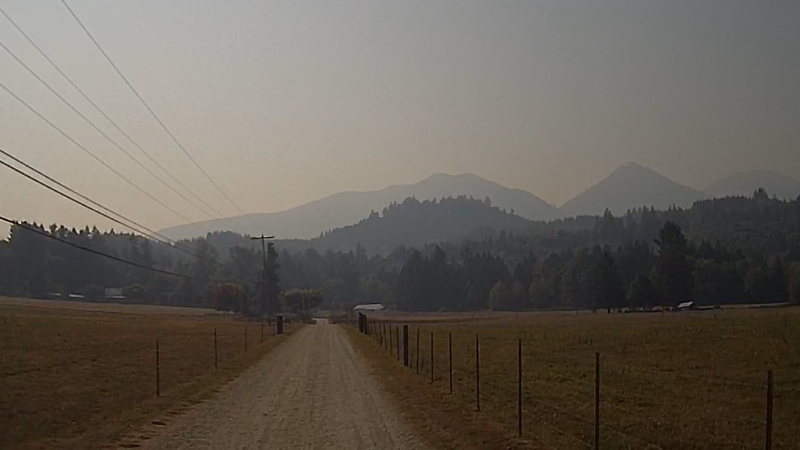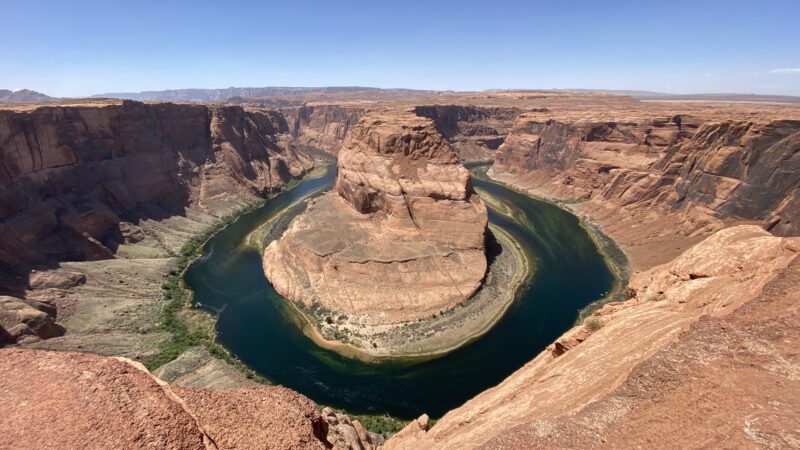The Art of War
February, 2021
Uncle Sam Wants You!
Chances are, when you read this proclamation, the image below pops into your head. It is perhaps the most iconic war poster of all times, at least in the United States. While the Uncle Sam character was created in the early 1800’s, this poster originated in 1917, as the U.S. was entering World War I. The message from the stern face and pointing finger was simple and direct: young American men need to join in the fight.

It may sound strange to us today, but the poster was a primary form of mass communication in the age before radio, as new printing technologies made it economical to mass produce colorful signs. As a result, the poster was key to the propaganda campaigns almost all combating nations directed towards their own citizens to support their war efforts. Every major country pulled out all the stops to reinforce the civilian duty of sacrifice and loyalty. It is estimated that more than 20,000 different posters were produced.
War Art at the Museum
The posters were also often remarkable works of art and cultural messaging. Renown artists and writers of the day were often employed. Julia and I became fascinated with these posters when we visited The National WWI Museum and Memorial in Kansas City last year. The museum delivers a stunning portrait of World War I as it chronicles the nearly incomprehensible death and destruction that occurred over the roughly four years of battle (July 1914 – November 1918).
Seeing some of these wartime posters* up close helped us to understand how countries sought to instill unquestioning patriotism using themes ranging from hope to fear, bravery to guilt, destiny to hatred, strength to submission. For instance, Germany often used medieval warrior imagery in its artwork, as seen below left. The verbiage on the poster under the clinched armored fist starts out “This is the only way to peace – “. To the right is a poster from Great Britain. The perspective is at a time after the war, when the man is now older and a father. The message is one of guilt and regret for his absence in the war effort.
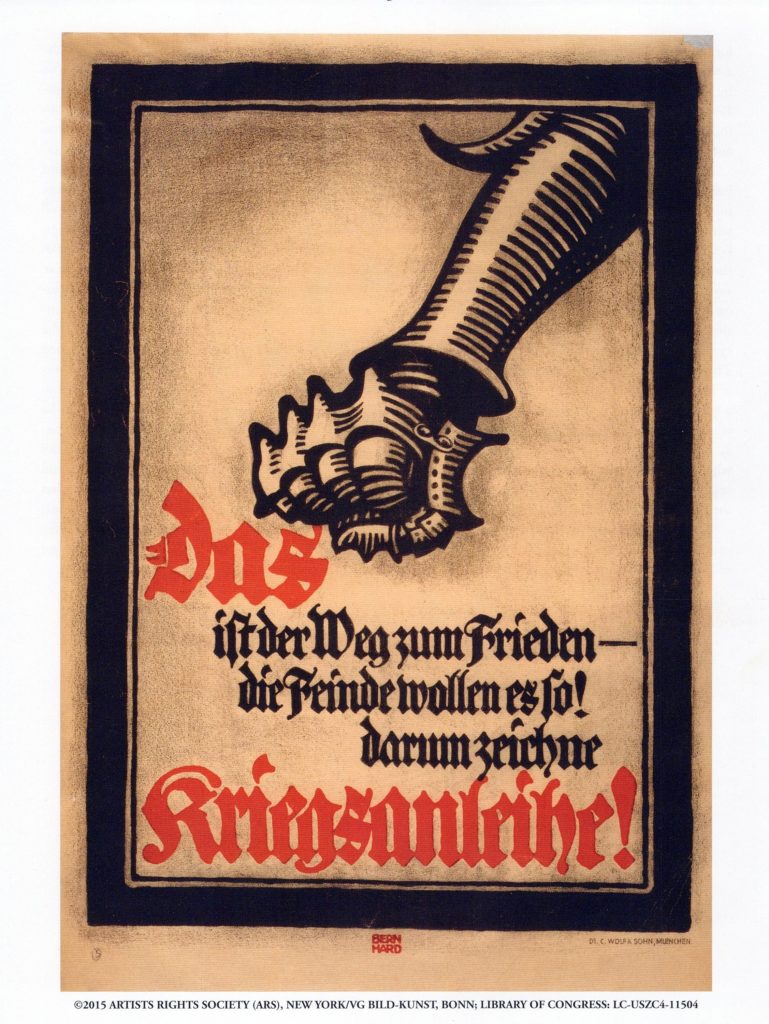
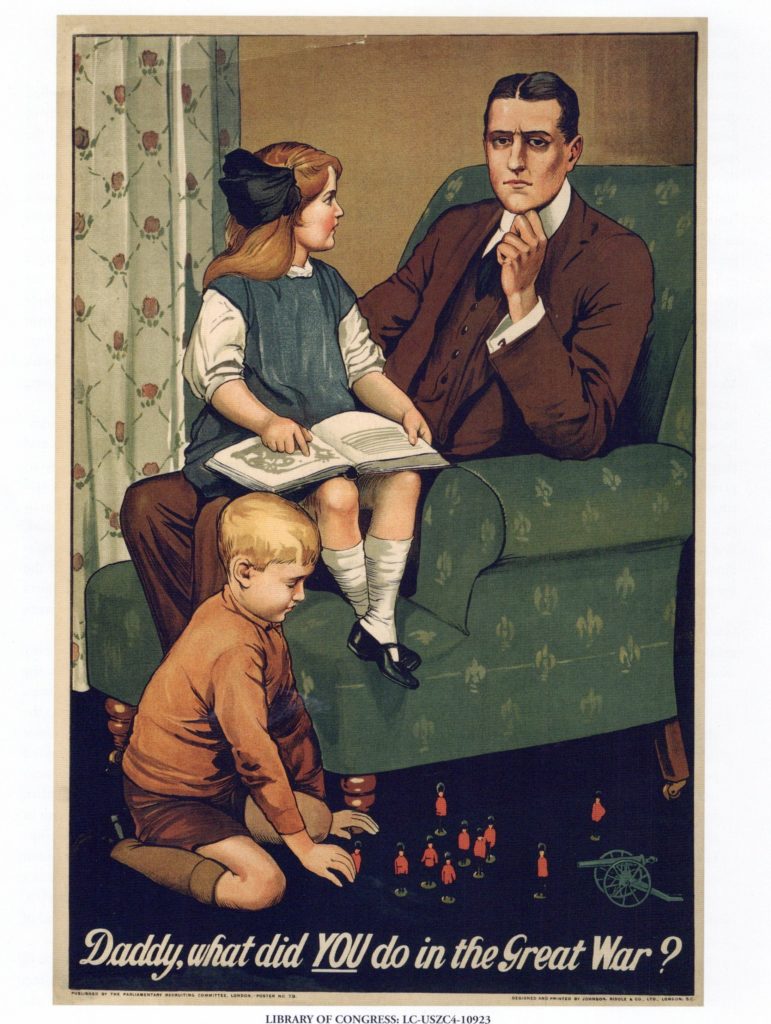
The following posters are from France and the United States, respectively. Most of the trench warfare took place on French and Belgium soil, so defending and reclaiming their homeland at all costs were major goals by the French. The message behind the soldier reads “They shall not pass!” The United States poster on the right is a prime example of de-humanizing the enemy. It’s intended to elicit both fear and hatred of the German soldier. (In case you are wondering, this poster was produced 16 years prior to the creation of the mythical King Kong.)
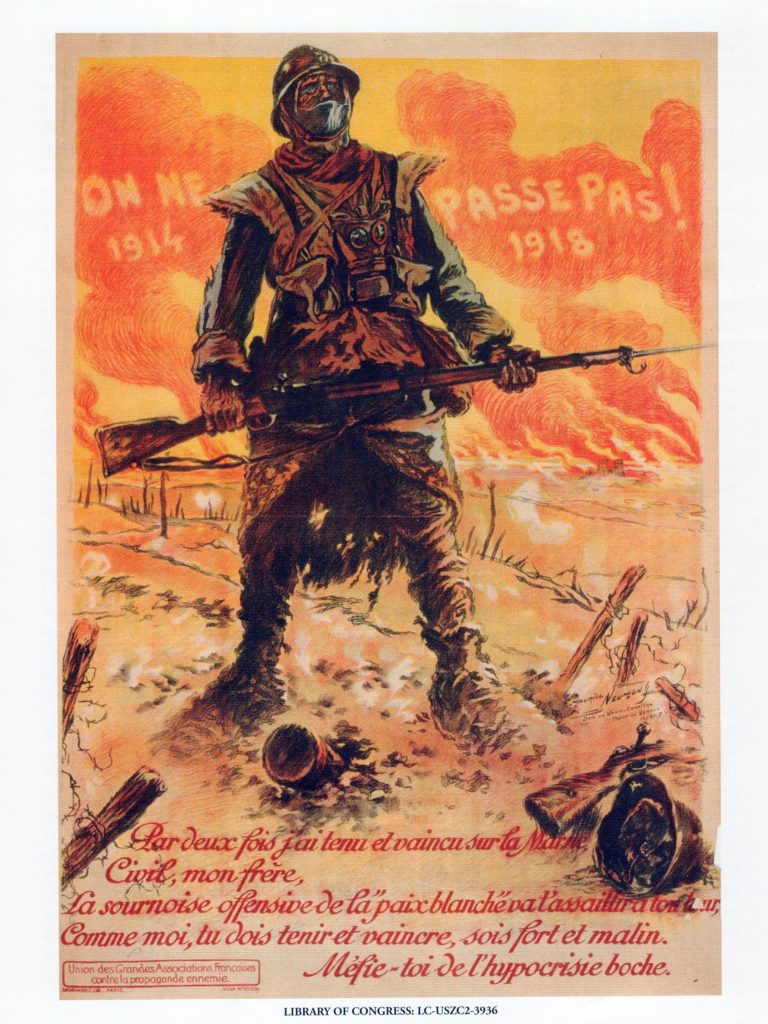
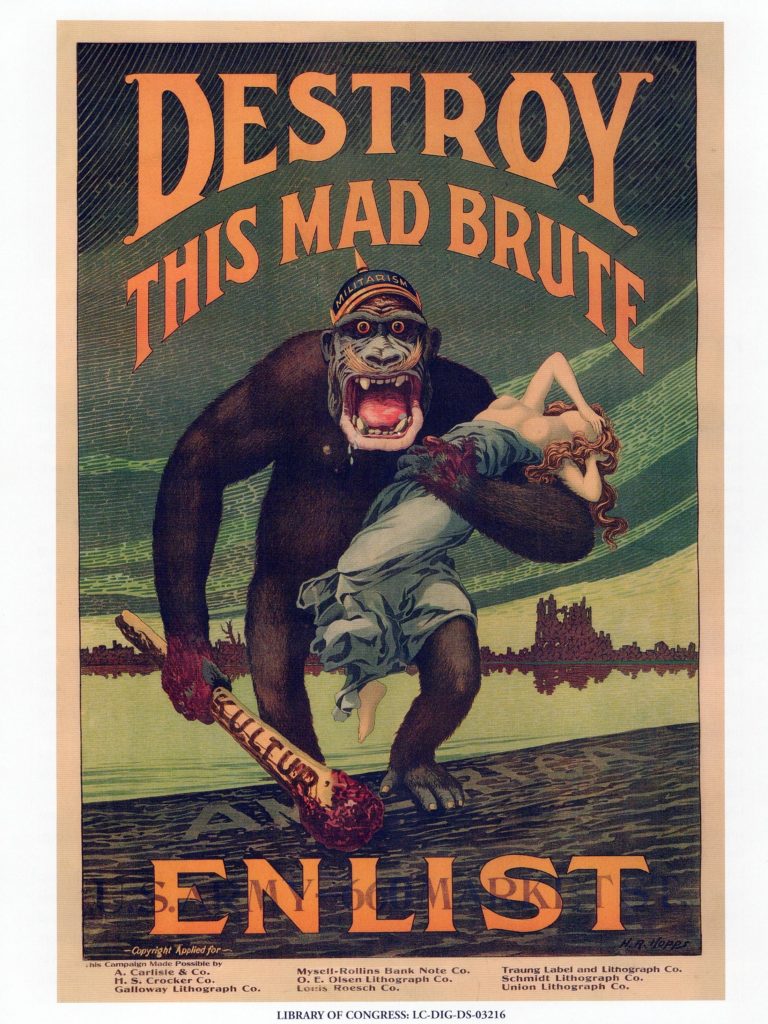
The U.S. Jumps In
One facet of this wartime PR campaign from a century ago that we can identify with today is that while the U.S. was in the war for less than two years (April 1917 to November 1918), we produced more posters than all the other combating nations combined. Even in the early 1900s, we were the acknowledged advertising king: ready, willing, and able to sell anything to anybody.
And we jumped in with gusto, as illustrated below. Both posters used patriotism to encourage citizens to buy government bonds. Funding the war was a dominant poster mission by all nations. The poster on the left employs Lady Liberty, teaming up with a boy scout, a message directed towards the youth of the day. On the right, new immigrants to America were drawn as if they are setting their eyes on the Statue of Liberty for the first time. Even though they may be arriving with little in their pockets, they are being reminded of their duty of loyalty to their new home.
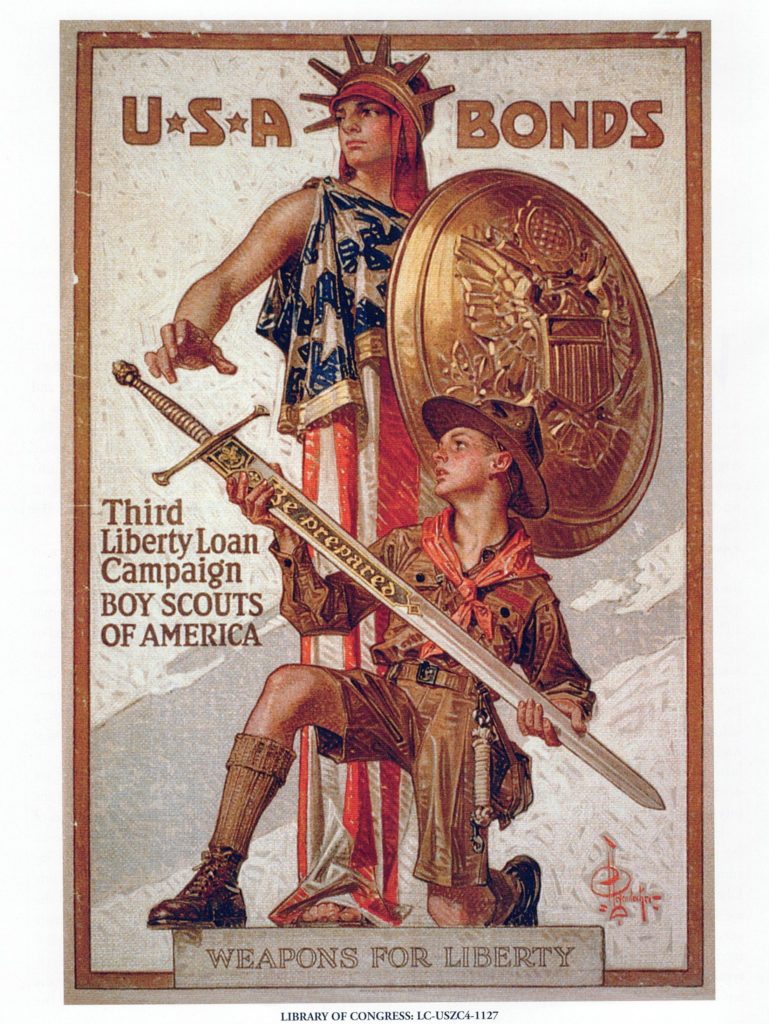

Below is a short video featuring a few other war posters that are on display in the museum. This exhibit alone makes the museum a great destination for those wanting to better understand a war and an era that have often been forgotten by later generations.
Cheers,
Bob and Julia
*These poster graphics and their historical context are provided courtesy of World War I in 40 Posters by Ann P. Lindner.
You Might also like
-
Dodging Fires
Fires seem to be consuming the West. Even without being near one, you cannot escape the smoke that is covering the entire region.
-
-
Squeezed Dry
The megadrought the western United States is in dates back to the year 2000. We’re witnessing the effects of it more and more in our travels.


